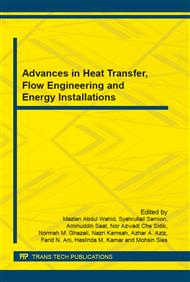p.420
p.427
p.432
p.438
p.443
p.449
p.454
p.459
p.469
Investigation of Performance and Fuel Economy for Cylinder Deactivation Engine at Part Load Operation
Abstract:
In automotive engine applications, the spark ignition (SI) engines can operate at various engine speed and load conditions. However, most of the time was spend at part load operations, where they operate below their rated output especially during cruising or idling. The needs of improvement in term of engine efficiency at part load operation become more popular among the engine manufacturers. One of the main reasons for efficiency dropped at part load conditions is the flow restrictions at the throttle valve opening area due to nearly-close position to control amount of inducted air into the cylinder, which leads to increasing in pumping losses. Hence, there are a lot of studies and investigations have been carried out to tackle these problems without sacrificing the original performance. This paper will investigate further the engine efficiency, performance as well as fuel economy by using one-dimensional (1-D) simulation tool. A baseline simulation model of a 1.6 liters four cylinders, port fuel injection engine has been developed based on the actual engine geometries. This baseline model applied predictive combustion to predict the amount of cylinder pressure based on actual ignition and injection timing on bench. The simulated results show a very good agreement with the measured data. Additionally, this study also proved that the deactivation half of the cylinders can significantly reduce the pumping losses of fired cylinder while eliminated the pumping work of unfired cylinders.
Info:
Periodical:
Pages:
443-448
Citation:
Online since:
January 2016
Keywords:
Price:
Сopyright:
© 2016 Trans Tech Publications Ltd. All Rights Reserved
Share:
Citation:


